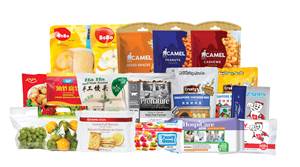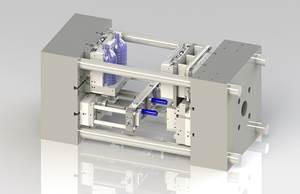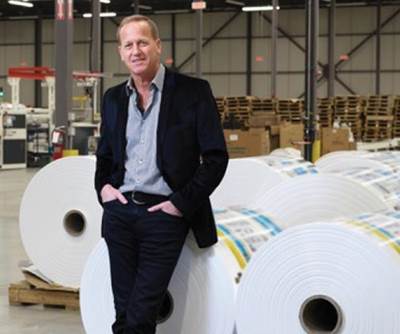PE Film Market Snapshot 2020: Envelopes
One of the fastest-growing PE film markets is expected to grow at a clip of of 5.2% a year through 2022.
This is the ninth in a series of blogs based on 2019-2020 research conducted by ., St. Joseph, Mo. on key markets for processors of polyethylene film. There will be 10 articles in all. The first five offered Mastio’s analysis—based on interviews with processors conducted direct by the Missouri firm—with film processors representing the five largest PE film markets: stretch film, consumer/institutional product liners, T-shirt bags, institutional can liners and consumer trash bags.
The second batch of five focus on the five fastest-growing PE film markets. We’ve already hit on bubble-wrap market, converter film and deli bags and wrap. Here, we focus on the envelope market and magazine overwrap market.
Envelopes are typically opaque, printed, and pre-formed with a pressure sensitive adhesive flap. Magazine overwrap is usually clear, unprinted, and sold to end users in rollstock form. Magazine overwrap film is generally used for wrapping magazines and other printed literature.
Typical uses of envelopes and magazine overwrap include:
- Number 10 Business Envelopes
- Mail-Order Fulfillment
- Biomedical Specimen Envelopes
- Mass-Billing Envelopes
- Cash-Management Envelopes
- Protective Envelopes
- Courier Envelopes
- Sample-Product Envelopes
- Direct-Mail and Catalogs
- Security Envelopes
Sizes and gauges of envelope and overwrap film vary greatly, depending upon the type of product being packaged. Preformed envelopes can range from two to nine layers and are frequently three-layer, coextruded structures. They are typically sealed on three sides and include a flap coated with pressure sensitive adhesive along the open side. Common envelope (poly-mailers) sizes are 5 in. x 7 in., 6 in. x 9 in., 7.5 in. x 10.5 in., 9 in. x 12 in., 10 in. x 13 in., 12 in. x 15.5 in., 14 in. x 17 in., 14 in. x 19 in., 19 in. x 24 in. , and 24 in. x 24 in.
Gauges for envelopes typically range from 1 to 4 mils, with 2 mils being the most typical.
The Numbers
North American producers of PE envelope and magazine overwrap film processed approximately 140.1 million lb of resin for this market in 2019. This market is expected to increase by an average annual growth rate (AAGR) of 5.2%, increasing PE resin consumption to approximately 163.4 million lb by the year 2022.
PE envelope and magazine overwrap film can be grouped into three major categories: mailing envelopes, cash-management envelopes, and magazine overwrap. Within each broad classification there are several types of envelope structures, each differentiated by either the method of closure or the specific application.
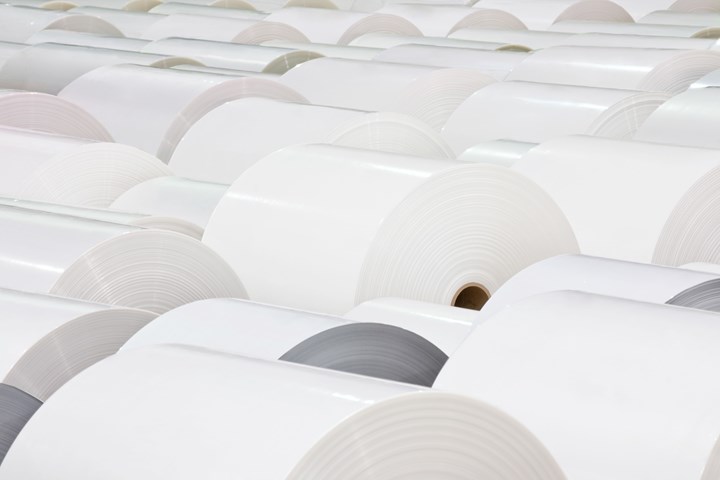
Photo: .
The Players
During 2019, the four largest participants in this market were as follows: Next Generation Films Inc.; Sealed Air Corp. (Protective Packaging Div.); Novolex; and Sigma Plastics Group (Mercury Plastics Div./Poly Pak Packaging Div.). Collectively, these companies processed approximately 73.6 million of PE resin for this market for a combined market share of 52.5%.
The Resins
Several PE resins were utilized in the envelope and magazine overwrap film market during 2019. The resins were often coextruded or blended in various ways depending on the film characteristics desired by the end use customers. PE magazine overwrap film is typically a monolayer film composed of LDPE-homopolymer resin, LLDPE-butene resin, or a blend of the two resins.
Envelopes are typically constructed with a three-layer coextruded film. The outer layer is often a HMW-HDPE or MMW-HDPE resin. The center, or core layer, of envelope film usually consists of a LLDPE or nylon resin for improved strength and puncture resistance. One company even uses medium density PE (MDPE) as the outer layer and LDPE-EVA copolymer resin as the core layer in their three-layer envelope film.
Processing Trends
Magazine overwrap film is typically a monolayer film, available in gauges ranging from 1-2.0. This type of film is typically sold to the end user in rollstock form. The companies purchasing the magazine overwrap film utilize high-speed machines that form and seal their products in one step.
Magazine overwrap can also be formed into envelope-type structures. Preformed magazine overwrap structures are usually sealed on two or three sides. The end user then seals the remaining side(s) after placing their product inside.
During 2019, both the blown and cast film extrusion processes were utilized in the production of film for envelopes and magazine overwrap. The blown film extrusion process has remained the primary process utilized in this market.
Both monolayer and multi-layer coextruded film constructions are utilized in the production of film for the envelope and magazine overwrap market. Envelope structures range from two to nine layers, with three layers reported as the most common; layer configurations reported were ABC and ABA, with each letter representing a unique grade and/or type of resin. Some envelopes utilized for cash management are monolayer in structure, and magazine overwrap films are almost always monolayer structures.
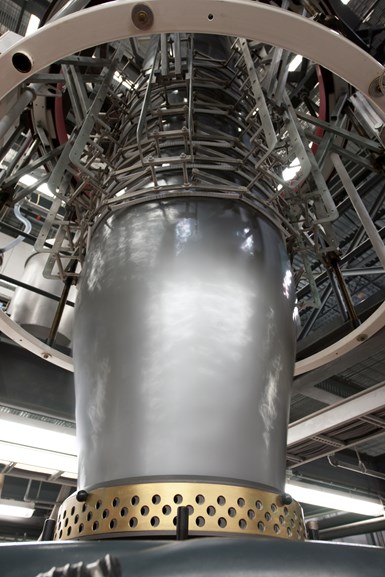
Blown film extrusion produces most (more than 87%) of the PE film used for envelopes and magazine overwrap, according to Mastio. Photo:.
The Future
In a strong economy, consumers tend to buy more goods. Every participant in this market stated that the increased volume of internet sales and e-commerce 大象传媒 has provided an excellent growth opportunity for this market, as many of the items purchased by consumers on the internet require shipping and envelopes. Online ordering through Amazon has become a popular trend in shopping, year-round, making the envelope market increase at a fast growth rate. With the increase in online shopping, mailer and courier bags have become an important part of everyday 大象传媒 for many companies.
Demand for poly-mailer films for medical prescription use is continuing to increase as the aging populations continues to increase. Consumers are finding the convenience of having their medicines and medical supplies shipped (utilizing poly-envelopes) directly to their door is a much better options vs. picking them up in the pharmacy or retail store. Film producers continue to be aware of upcoming changes in the envelope and magazine overwrap market in order to give their customers what they want along with a better value for their money.
There is increased pressure on the PE film industry to reduce waste by recycling. Manufacturers of envelope and magazine overwrap are ensuring that scrap film or resin is being recycled back into the film extrusion process. Some producers of envelope and magazine overwrap recycle their post-industrial scrap in the production of PE films. Recycling scrap film, including post-industrial recycled material and post-consumer recycle (PCR) provides manufacturers the opportunity to save on material costs, as well as help the environment.
Related Content
Flexible-Film Processor Optimizes All-PE Food Packaging
Tobe Packaging’s breakthrough was to create its Ecolefin PE multilayer film that could be applied with a specialized barrier coating.
Read MoreAt NPE, Cypet to Show Latest Achievements in Large PET Containers
Maker of one-stage ISBM machines will show off new sizes and styles of handled and stackable PET containers, including novel interlocking products.
Read MoreUS Merchants Makes its Mark in Injection Molding
In less than a decade in injection molding, US Merchants has acquired hundreds of machines spread across facilities in California, Texas, Virginia and Arizona, with even more growth coming.
Read MoreThe Recycling Collaboration That Is Making Circular Film a Reality
Nova Chemicals and Novolex are commissioning a large mechanical recycling facility for film to film.
Read MoreRead Next
PE Film Market Analysis: Cheese Packaging
Market is projected to grow by 4.4% over the next three years. Coextruded blown film structures dominate.
Read MoreOn-Site: The Buck Stops Here
Fully integrated manufacturing and an unwavering commitment to quality has helped position NELMAR as the ‘gold standard’ in tamper-evident security bags.
Read MorePE Film Market Analysis: Geomembrane Liners
Market to average 3.4% growth over the next two years.
Read More








